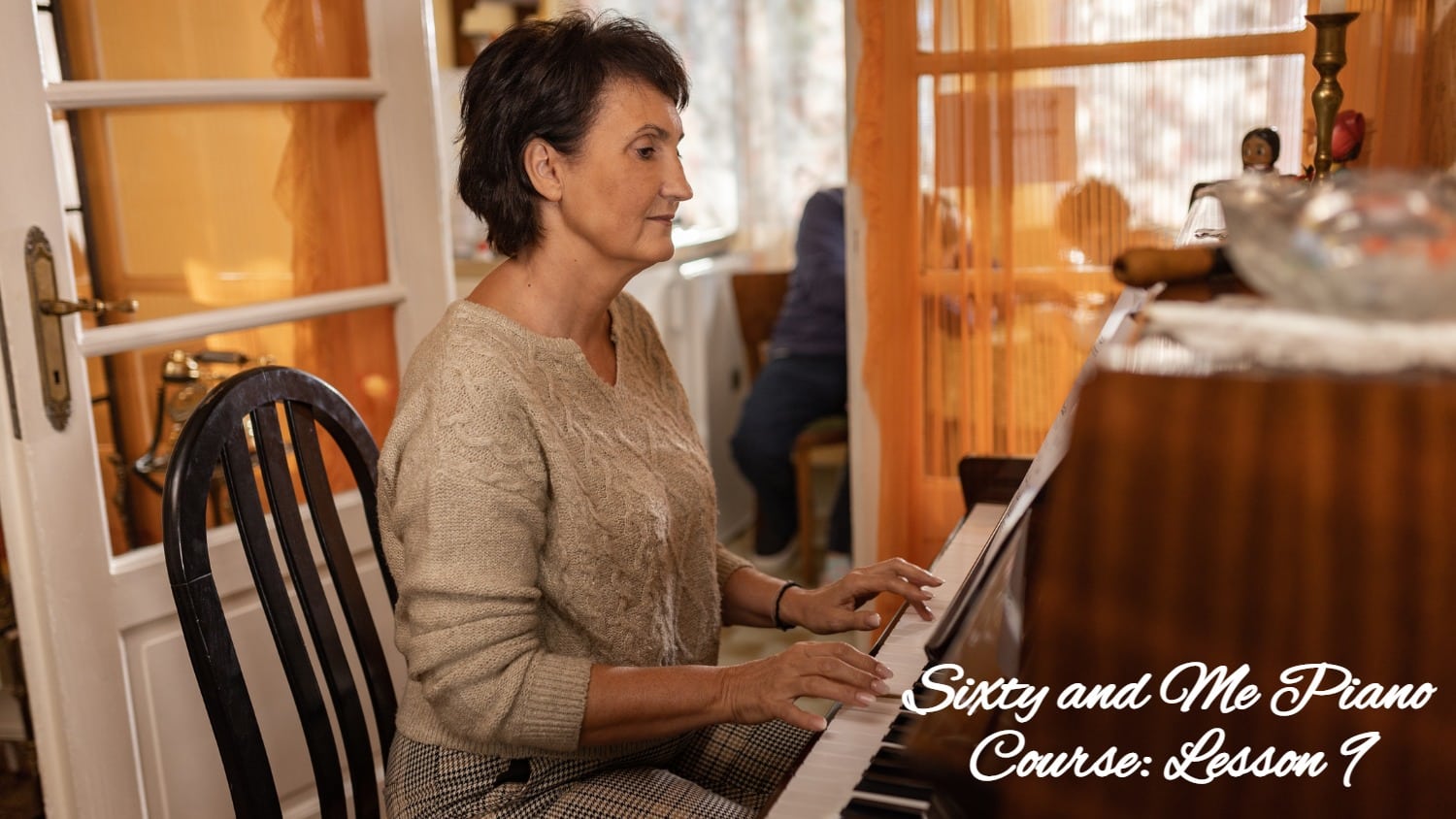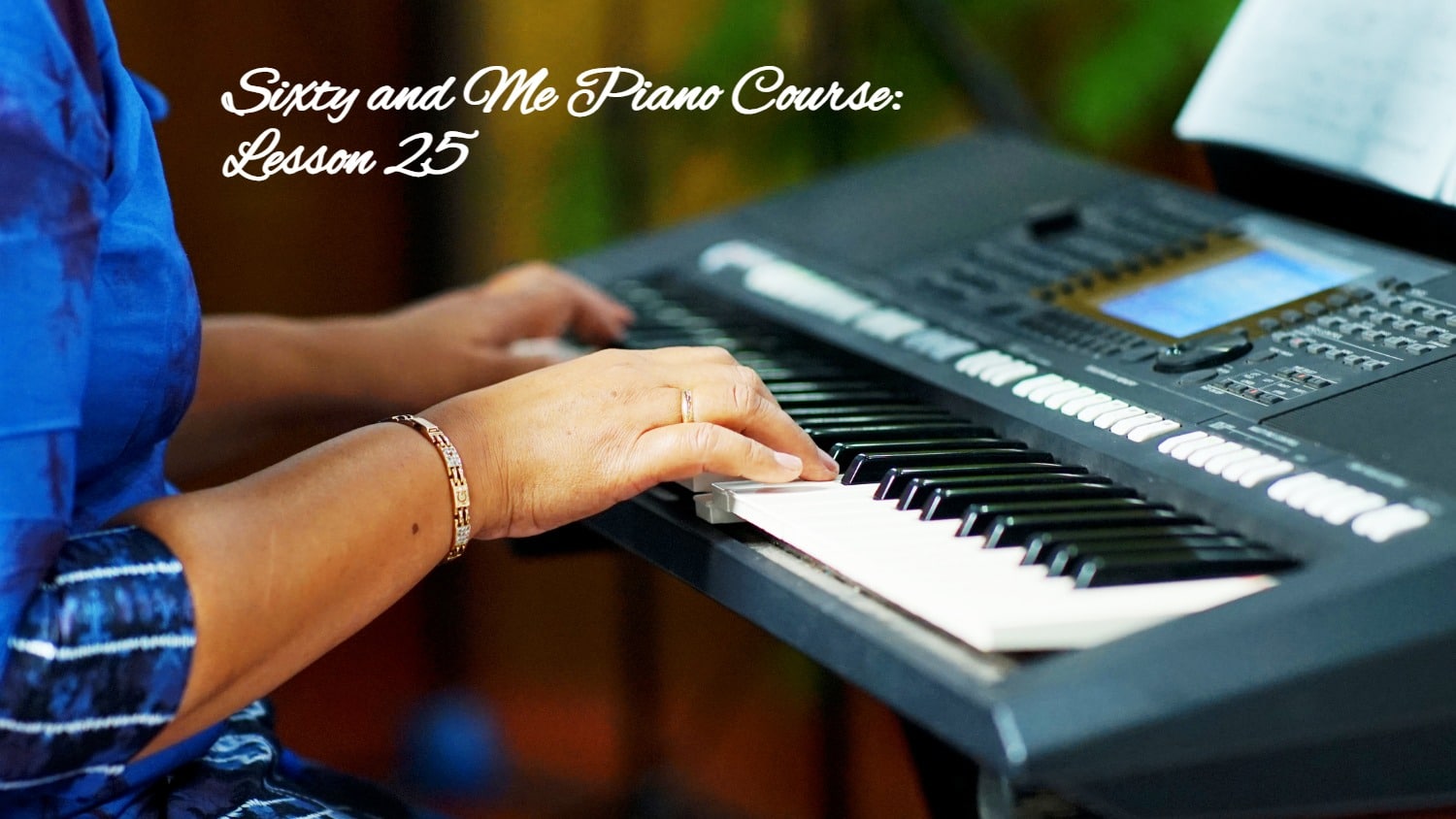
Piano Lesson 9: The Dynamic Duo: P and f
[NOTE: If you are just joining us for the first time, you will find the list of my previous Sixty and Me Free Piano Lessons at the bottom of this post. You can join our lessons any time!]
9.1 Dynamics
When the piano was invented by Bartolomeo Cristofori in Italy in the early 1700s, it was a revelation! The instrument that preceded it, the harpsichord, was much less expressive. No matter how forcefully one pressed a key, the volume remained the same.
The harpsichord mechanism plucked a string, but the new piano mechanism consisted of hammers that struck the strings. This meant that if one pressed a key lightly it would sound soft, and if one pressed the key forcefully it would sound loud!
Cristofori named his instrument “clavicembalo col piano e forte” which means “a harpsichord that can play soft and loud.” The name was later shortened to just the “Piano” for ease. The ability to play at different volumes, or “dynamics” changed piano playing and composing forever. Now piano music could be played much more expressively.
For more about how Dynamics add heart and soul to your music, watch my video:
In Upper Hands Piano, BOOK 1 p.36, we start adding dynamics in our pieces. Notice that Waltz for Pianoforte starts with a P which means to play softly, or piano. The last line of the piece begins with an f which means to play loudly, or forte. I like to call piano and forte the Dynamic Duo, because they are the two dynamic markings you will see the most often in sheet music.
Symbols of piano and forte dynamics in sheet music:


9.2 Waltz for Pianoforte, p.36
Turn to p.36 in Upper Hands Piano, BOOK 1. Notice that there is an F-sharp in the second line bass staff. The photo at the top of the page will remind you where to find F-sharp. You can watch my demonstration video of Waltz for Pianoforte here:
9.3 When the Saints Go Marching In, p.37
On p. 37 you are playing When the Saints Go Marching In again, this time with two hands. Notice that you get to start playing some two-note left hand chords, woohoo! Watch to be sure you are using the suggested fingering for the bass notes in order to play them smoothly.
In this song you also have half rests and whole rests. They look almost the same, but the whole rests hang below the fourth line (fourth line from the bottom) while the half rests sit atop the third line.
Read the mnemonic device on p. 38 to help you remember the difference: “The HALF REST sits like a HAT on a table. The WHOLE is so heavy it hangs below.” Here’s a demonstration of When the Saints Go Marching In:
Fill in the blanks for the Musical Math on p.38. You can review note and rest values on pages 9, 27, 29 and 37 if you are not sure. Then check your work on my website’s ANSWERS page.
9.4 Bonus song: Down in the Valley
You can print the sheet music for Down In the Valley here on my website (scroll down).
Watch the fingering as you play each hand separately first. I have included a Treble note B; to play it, slide your 1-finger (thumb) to the B just below middle C. Here is how it goes:
Passion Practice!
- Exercise #2 in A-flat and E-flat, and review C through D-flat occasionally. Play each exercise twice: 1x Forte (loudly) then 1x Piano (softly). Try to keep your notes consistently Forte or Piano. It can be particularly difficult to play Piano consistently, so keep playing your exercises 1X Forte and 1x Piano to practice your Dynamics.
- Play Waltz for Pianoforte, p.36 and When the Saints Go Marching In, p.37 both weeks.
- Play Down in the Valley in your second week, watching your fingering and dynamics.
- If you have time, review p. 23-24.
Full Course So Far
INTRODUCTION: https://sixtyandme.com/piano-lessons/
LESSON 2 https://sixtyandme.com/piano-lesson-number-1/
LESSON 3: https://sixtyandme.com/piano-lesson-3-health-issues-and-exercises/
LESSON 4: https://sixtyandme.com/piano-lesson-4-feel-the-beat/
LESSON 5: https://sixtyandme.com/piano-lesson-5-bass-g/
LESSON 6: https://sixtyandme.com/rests-and-pickups/
LESSON 7: https://sixtyandme.com/piano-lesson-steps-skips/
LESSON 8: https://sixtyandme.com/piano-lesson-8-goodnight-ladies/
Let’s Have a Conversation:
Is it easier for you to play consistently Piano or Forte? Why do you think that is? Do you find it easier to play songs that you have heard before, such as Down in the Valley or When the Saints Go Marching In? Or do you enjoy the challenge of learning unfamiliar songs? Leave a comment below and let us know how your piano playing is going!
Tags Piano Lessons






